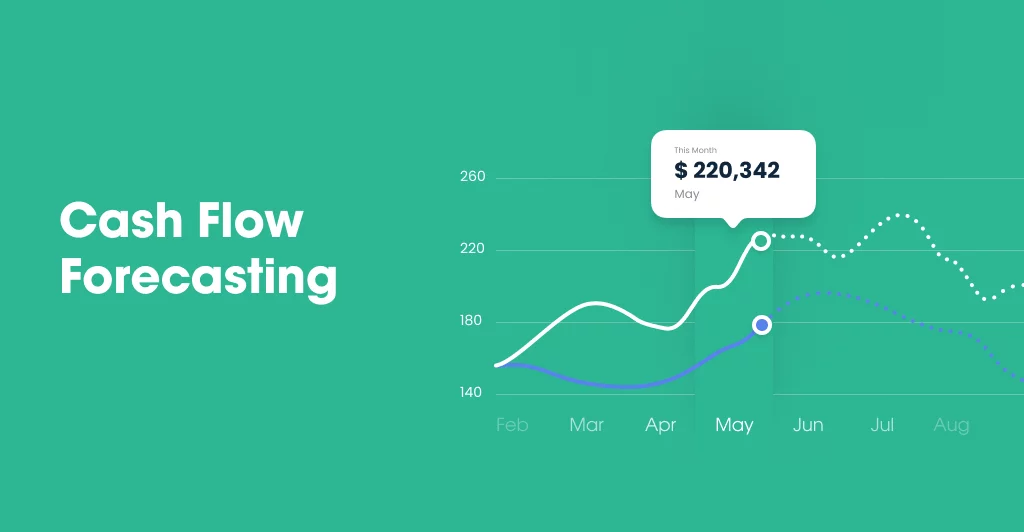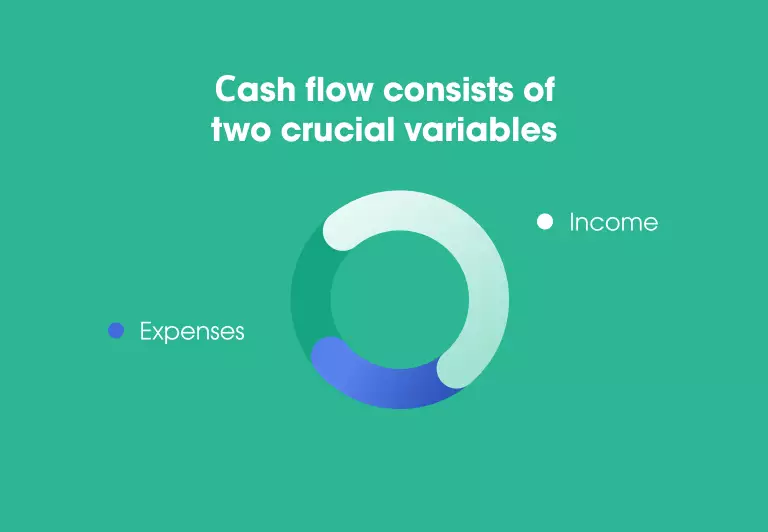
Fact: Cash is the fuel that keeps your company’s engine running. But at the same time, it’s also the most dynamic and unpredictable part of your business. So, how can you forecast cash flow? Indeed, cash flow has the immense power to bring your plans and strategies to life… or alternatively send them all up in smoke if you lack the money to cover your bills.
The good news is that performing regular cash flow forecasts can help you address many issues in advance and ensure your subscription business runs smoothly.
In this article, we’ll guide you through all aspects of building your cash flow forecast, from the data you’ll need to the methods and calculations you can use. So keep on reading!
What Is Cash Flow Forecasting and Why Does It Matter?
Cash flow forecasting is the process of predicting your company’s future financial situation by considering your expected money income and expenses. Simply put, it helps you estimate how much money will be moving into and out of your business bank account.
Why is this important? Here are a few reasons why cash flow forecasting is necessary for a successful subscription business.
Financial control
A cash flow forecast provides you with a complete picture of your company’s financial health. The data you gather gives you a better understanding of how your subscription business operates. For example, with a forecast, you can:
- Identify your cash inflows and outflows
- Better control and plan future expenses
- Predict and prepare for negative cash flow or other problems
As a result, you get an overall view of your financial situation and can take steps to control it (e.g., by cutting expenses or opening a line of credit).
Better financial planning and decision-making
A cash flow forecast can vary according to the variables you put into it, such as salaries, revenue from sales, supplier costs, and taxes. Сhanging the amounts for these variables lets you play with different scenarios and see how and when they will affect your company’s cash flow.
For instance, cash flow forecasting can help you see how employing new staff members or raising salaries would impact your finances over a certain period. You can then make better decisions based on this data.
Warning of cash flow shortages
Cash flow forecasts can give you advanced warning of cash balance shortfalls based on your future income and spending. This gives you time to adjust your plans or take out a loan to face things before the situation gets too complicated.
Inspiration for business growth
As a subscription business owner, you naturally want to grow your business, increase average revenue per user, and earn more money. A cash flow forecast can help you see options for growth you may not have considered before. What’s more, accurate forecasting will help you test outgrowth scenarios and directly see their impact on your subscription business as they come to life.
Once creating a cash forecast is on your to-do list, it’s time to find out what you need to make one.
What You Need to Forecast Your Cash Flow
Your cash flow consists of two crucial variables: income and expenses. These allow you to correctly calculate your net cash flow—the difference between the money flowing into and out of your business over a specific period.
Let’s look at the most common things that make up your cash inflows and outflows.

Cash Inflows
For a cash flow forecast to be reliable, it needs to cover every source of income. Apart from your subscription cash flow, your business can have other, less noticeable forms of incoming cash.
Here are the main types of income your subscription business may have.
Revenue from sales. This is basically the primary source of your business revenue, which you add as your Cash from operations section of your report. For the forecast to be accurate, you should only include the money you receive right away and deposit it in your bank account.
New loans and investments. At some stage, your subscription business may get additional funding in the form of loans or money from investors. Use separate columns for these numbers in your forecast since loans require direct repayment while investments don’t.
Sales of assets. When you buy new assets or equipment for your business, you need to do something with your old assets. If they’re suitable for sale, you can sell them off and track the money you receive by adding them to the Sales of assets section.
One-time sales. In addition to recurring revenue from subscriptions, you may have orders for one-time sale items. Don’t forget to add that income too to your cash flow forecast.
Interest. Your business will also be earning interest from money sitting in your bank accounts. If you have a lot of money in the bank, the interest could add a significant amount to your cash inflow. Even if this is not the case, don’t forget to add your interest to a separate section of your cash flow forecast.
Sales tax. Your subscription business will also collect taxes from its customers in the form of sales tax, VAT, or GST/HST. It’s better to report this money in a specific row of your cash flow forecast since you’ll eventually need to pay it back to the government.
Cash Outflows
Calculating cash outflows is similar to calculating inflows, just less pleasant! Every business is different, but you’ll likely have the following categories of cash spent.
Routine business expenses. You can divide this section into subcategories and indicate payroll, utilities, bill payments, loan payments, repayments, and other regular or recurring expenses.
Purchase of assets. Sometimes, you’ll need to buy new assets like equipment, vehicles, or even real estate. If you plan to upgrade, don’t forget to add new asset purchases to your cash flow forecast.
Taxes. If you’ve done your homework and already subtracted sales taxes as a revenue source, you can simply copy those numbers into the corresponding outflow section of your cash forecast.
Non-operating expenses. You may also have costs that aren’t directly associated with running your business. For instance, there could be investments that your company plans to make or interest you have to pay on loans.
Other expenses. Finally, don’t forget to include smaller additional fees, like those taken by payment processors or fees you spend on inventory, management, or forecasting tools.
Congratulations! Once you’ve calculated all of your cash inflows and outflows, the first part of your forecasting work is done. Now you’re ready to choose the forecasting method that suits you best.
Methods to Forecast Your Subscription Business Cash Flow
There are two cash forecasting methods: direct or indirect. Both of these help you predict how much cash your business will have in the future but do it in different ways.
Let’s deep dive into each method to help you decide which one you need.
Direct Method
Once you’ve calculated your cash inflows and outflows, direct cash forecasting is simple. All you need is the following cash flow formula:
cash flow = inflows – outflows
The number you get will be your net cash flow. If it’s positive, well done: you’re set to make a profit. If it’s negative, your expenditures are higher than your receivables, and you need to take action for your business to stay afloat.
Indirect Method
Indirect cash forecasting is more widely used to predict cash flows, including investments and financing.
To use indirect forecasting, you take the net income (profit) value at the end of your reporting period and then adjust it for all the sources and uses of cash that aren’t part of your income calculation. You also need to remove any non-cash transactions shown on your profit and loss statement.
This new cash flow formula looks like this:
cash flow = net cash flow +/- adjustments
For instance, you need to add back the depreciation amount of fixed assets shown in your account. This is essential since the use of depreciation can reduce taxes that can ultimately help to increase net income. As a result, you’ll have a higher amount of cash on the cash flow statement.
You also need to add or subtract the changes in the cash value of specific categories that relate to operating cash flow activities like sales revenue or supplier costs. Once you’ve calculated their net effect, the final step is to apply the impact of the changes due to investing (e.g. new equipment purchase) and financing (e.g. long-term loans).
So, which forecasting method is better: direct or indirect? It depends on your goals and the results you want to obtain.
Direct cash forecasting will give you accurate results in the short to medium term (up to 90 days), but it’s unsuitable for longer-term predictions.
The indirect approach, in turn, is more useful for long-term planning as it can project the amount of cash required to fund long-term growth but lacks accuracy for short to medium projections.
Ways to Influence Your Cash Flow
Poor cash flow negatively impacts your subscription business, relations with suppliers, and human resources. The worst thing is that problems with cash flow may come out of the blue, even if you did your job with forecasting.
How so?
The primary causes of inaccurate forecasting lie in poor visibility of business operations and fragmented or inaccurate financial data in your company’s cash flow forecast. Your churn rate is one hidden reason your monthly recurring revenue may be lower than you expect. You can calculate it with the following formula:
customers you lost over a certain period
churn rate = —————————————————————- * 100
customers you started with over a certain period
On average, a “good” churn rate for subscription business companies ranges from 3% to 5% monthly. If you get higher numbers, your churn rate could be dragging your business down.
Another factor that can influence your forecasts is billing management. Inaccurate data or missing or outdated information create an inaccurate forecast, which can lead to even bigger problems.
Employing a reliable billing solution will help you get reliable, up-to-date financial information to determine and project your future cash flow properly. What’s more, it can take the burden off your shoulders by automatically sending your customers timely invoices and managing your dunning process. With this support, you eliminate manual mistakes and improve your timely payment rate, which helps you better predict and plan your cash flow.
Summing Up
Cash flow forecasting is an essential part of controlling your finances and building a successful subscription company. It shows you when your business might run low on cash in the future, so you can be prepared or even take action. Yet to make correct predictions, you need to properly gather and organize your financial data.
At Subbly, we’ve got your back. We’re a feature-rich Subscription-First™ commerce management platform with all the insights and analytics you need to create an accurate cash flow forecast. What’s more, we offer a 14-day free trial that shows you how easy and flexible billing, marketing, shipping, and management can be. Click here to get started today!
Subbly – the purpose built platform for starting and growing subscription businesses
